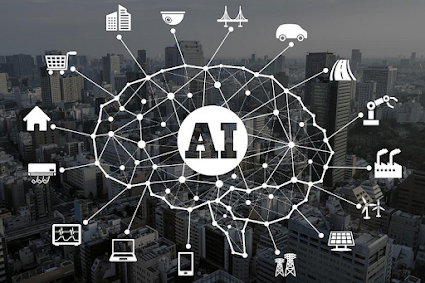AI vs ML vs DL
AI vs ML vs DL: Understanding the Differences in Simple Terms
Artificial Intelligence (AI), Machine Learning (ML), and Deep Learning (DL) are frequently used interchangeably, but they are not the same. They are like different levels of intelligence that machines can have.
- AI is the broadest concept — making computers "think" and "act" smart.
- ML is a way for AI to learn from data and improve over time.
- DL is a more advanced version of ML that works like a human brain, learning complex patterns on its own.
Let’s break it down in the simplest way possible.
1. What is Artificial Intelligence (AI)?
Artificial Intelligence is the big umbrella under which both Machine Learning and Deep Learning exist. AI is any technology that makes machines perform tasks that usually require human intelligence — like problem-solving, decision-making, and pattern recognition.
AI Can Work in Two Ways:
1.Rule-Based AI – The system follows predefined rules to make decisions.
Example: If your spam filter sees certain keywords, it marks an email as spam.
2.Learning-Based AI – The system learns from experience and improves over time.
Example: A chatbot that improves its responses based on conversations.
Examples of AI in Everyday Life:
- Siri, Alexa, and Google Assistant – Voice AI that understands and responds to you.
- Google Maps – AI predicts the fastest routes based on traffic.
- Self-Driving Cars – AI processes road data and makes driving decisions.
AI can be simple or highly advanced, depending on how it's built.
2. What is Machine Learning (ML)?
Machine Learning is a branch of AI that helps machines learn from data without being explicitly programmed. Instead of giving step-by-step instructions, we feed the system tons of data, and it figures out patterns on its own.
Think about how we recognize animals. Instead of memorizing every possible feature of a dog, we see many pictures of dogs, and our brain learns what makes a dog different from a cat. That’s what ML does.
How ML Works:
1.Data Collection – The system gathers information (e.g., customer purchase history).
2.Training – The AI finds patterns in this data.
3.Prediction – It makes predictions based on what it has learned.
Where Do You See ML?
- Netflix and YouTube Recommendations – Suggesting what to watch based on your past choices.
- Spam Filters – Identifying and blocking spam emails.
- Fraud Detection – Banks use ML to detect unusual transactions.
Types of ML:
- Supervised Learning – AI learns from labeled data (e.g., teaching AI to recognize dogs by showing labeled images).
- Unsupervised Learning – AI finds patterns in unlabeled data (e.g., customer segmentation in businesses).
- Reinforcement Learning – AI learns by trial and error (e.g., self-driving cars improving with experience).
ML is powerful, but it still requires human guidance for training and improvement.
3. What is Deep Learning (DL)?
Deep Learning is a more advanced form of ML that works like the human brain. It uses neural networks, which are layers of interconnected nodes, similar to brain neurons, to process data.
What makes DL special? It learns from data on its own — without human intervention.
How DL Works:
- Deep Learning analyzes massive amounts of data and gets better with experience.
- It uses multiple layers of neural networks to break down complex patterns.
Where is DL Used?
- Facial Recognition – Unlocking your phone with Face ID.
- Self-Driving Cars – Processing real-time road data for decision-making.
- Medical Diagnosis – AI detecting diseases in X-rays and MRIs.
Why is DL More Powerful?
- Processes complex patterns better than ML.
- Can handle massive data without human intervention.
- Improves itself over time, making fewer errors.
However, DL needs powerful computers and huge datasets, making it more expensive than regular ML.
4. AI vs ML vs DL: Key Differences
| Feature | AI (Artificial Intelligence) | ML (Machine Learning) | DL (Deep Learning) |
|---|---|---|---|
| What it does | Makes machines act smart | Learns from data and improves | Uses neural networks to learn deeply |
| How it works | Follows rules or learns from data | Finds patterns in structured data | Uses brain-like networks to process massive data |
| Human Involvement | Sometimes needs programming | Needs human guidance | Works mostly on its own |
| Computing Power | Can be low or high | Moderate | High (needs GPUs) |
| Examples | Chatbots, Smart Assistants | Spam Filters, Netflix Suggestions | Self-Driving Cars, Facial Recognition |
5. The Connection Between AI, ML, and DL
Imagine AI as a big tree:
- AI is the entire tree.
- ML is a strong branch that helps AI learn from data.
- DL is a smaller branch that makes AI smarter by mimicking the human brain.
Deep Learning is pushing AI forward, but Machine Learning is still widely used for practical applications.
The real question is: Will AI ever think exactly like a human? We’re not there yet, but AI is evolving rapidly.
Want to explore more? Stay tuned for upcoming blogs on how AI is shaping the world!


.png)
.jpg)
Comments
Post a Comment